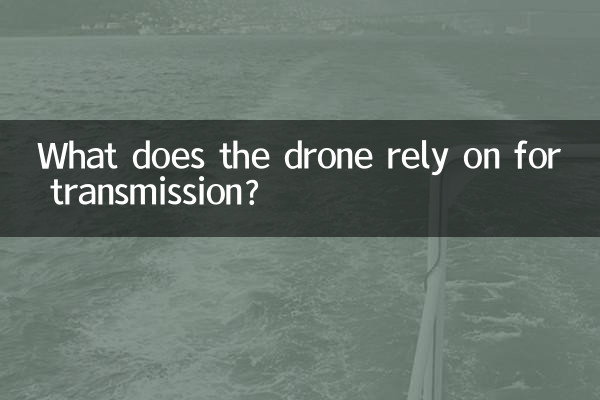What does the drone rely on for transmission? Uncovering the communication technology of drones
Drones have been a hot topic in the field of science and technology in recent years, and their application scope has expanded from the military field to agriculture, logistics, photography and other industries. So, how do drones achieve remote control and data transmission? This article will reveal the communication technology of drones and demonstrate its core transmission methods through structured data.
1. UAV transmission method

UAV transmission methods are mainly divided into three types: radio frequency communication, satellite communication and cellular network communication. Here's how they compare:
| Transmission method | Applicable scenarios | Transmission distance | Advantages and Disadvantages |
|---|---|---|---|
| radio frequency communications | short distance control | 1-10 kilometers | Low cost, but susceptible to interference |
| satellite communications | Ultra long distance operation | global scope | Wide coverage, but high latency |
| Cellular Network Communications | Medium and long distance missions | 10-50 kilometers | High stability, dependent on base station |
2. Radio frequency communication: the “nerve center” of drones
Wireless radio frequency communication is the most commonly used transmission method for drones. Data transmission between the remote controller and the drone is mainly realized through the 2.4GHz or 5.8GHz frequency band. The following are its technical features:
| frequency band | Transmission rate | Anti-interference ability |
|---|---|---|
| 2.4GHz | medium | weaker |
| 5.8GHz | higher | Stronger |
The advantages of wireless radio frequency communication are low cost and mature technology, but its transmission distance is limited and it is susceptible to interference from other electronic devices.
3. Satellite Communications: The “Global Eye” of UAVs
Satellite communications are mainly used for high-end drones in the military or scientific research fields, such as the American "Global Hawk" drone. Its characteristics are as follows:
| Satellite type | Delay | Coverage |
|---|---|---|
| geostationary satellite | high | worldwide |
| low orbit satellite | lower | area |
Satellite communications have extremely wide range, but have high latency and are expensive, and are usually only used for special missions.
4. Cellular network communication: the “intelligent link” of drones
With the popularization of 5G technology, cellular network communication has become a new choice for drone transmission. Here are its advantages:
| Network type | speed | Application scenarios |
|---|---|---|
| 4G LTE | 100Mbps | Logistics and distribution |
| 5G | 1Gbps or above | Real-time monitoring |
Cellular network communication has high stability and can realize real-time transmission of high-definition video, making it very suitable for drone applications in urban environments.
5. Future Trend: Multi-mode Fusion Transmission
In the future, UAV transmission technology will develop in the direction of multi-mode integration, combining the advantages of radio frequency, satellite and cellular networks to achieve more efficient and reliable communications. For example, drones can automatically switch communication methods during flight to ensure seamless mission continuity.
To sum up, there are various transmission technologies for drones, each with its own advantages and disadvantages. Choosing the appropriate transmission method depends on specific application scenarios and needs. As technology advances, drones will play an important role in more fields.

check the details

check the details